Blackcap Song… and More!
If we take in apart the aspect of its song, the Blackcap, Sylvia atricapilla, is a very crazy bird!
When we hear an unusual bird song, before thinking of any kind of bird unknown to us, it’ll be better if we exclude the possibility that it could be a Blackcap!
The Blackcap song is one of the least stereotyped that can be heard among the european birds, characterized by local dialectal variations. Moreover, it is frequently given in the form and with imitative phrases of other bird species, which generates further confusion for a correct ID.
Do we want to make life even more complicated? Let’s compare the song of the Blackcap to that of the Garden Warbler, Sylvia borin, and the damage is done!
PS For the Garden Warbler take a look at the images shown in reverse mode.
____________________________________________________________________________________________________
Se prendiamo in considerazione l’aspetto del canto, la Capinera, Sylvia atricapilla, è da considerarsi una specie veramente pazza!
Quando sentiamo un canto strano, prima di pensare a qualsiasi altra specie di uccello a noi sconosciuto, sarà meglio escludere la possibilità che possa trattarsi di una capinera. Il canto della capinera è uno dei meno stereotipati che si possano sentire tra gli uccelli europei, caratterizzato da notevoli variazioni dialettali locali. Inoltre, viene spesso emesso con frasi imitative di canti di altre specie di uccelli, il che genera ulteriore elemento di confusione per una corretta identificazione.
Vogliamo renderci la vita ancor più complicata? Confrontiamo il canto della capinera con quello del beccafico, Sylvia borin, e la frittata è fatta!
A full song is normally structured with relatively short phrases
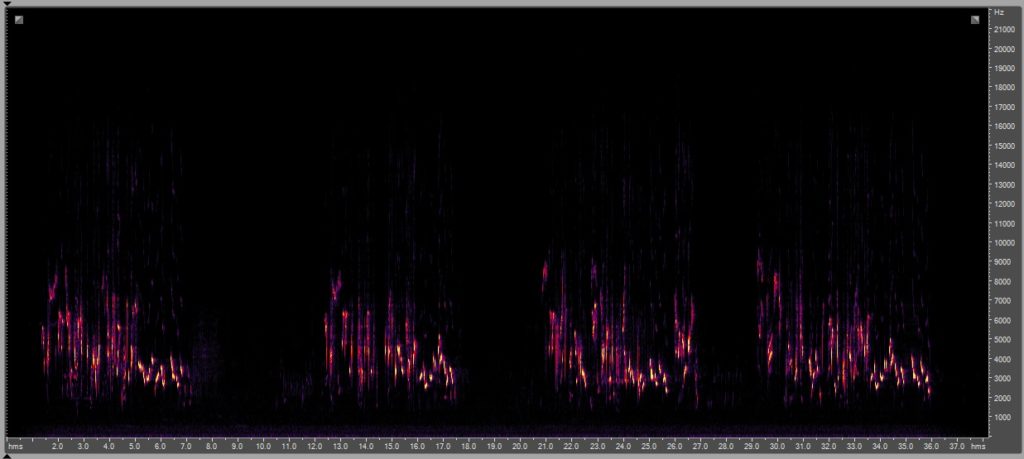
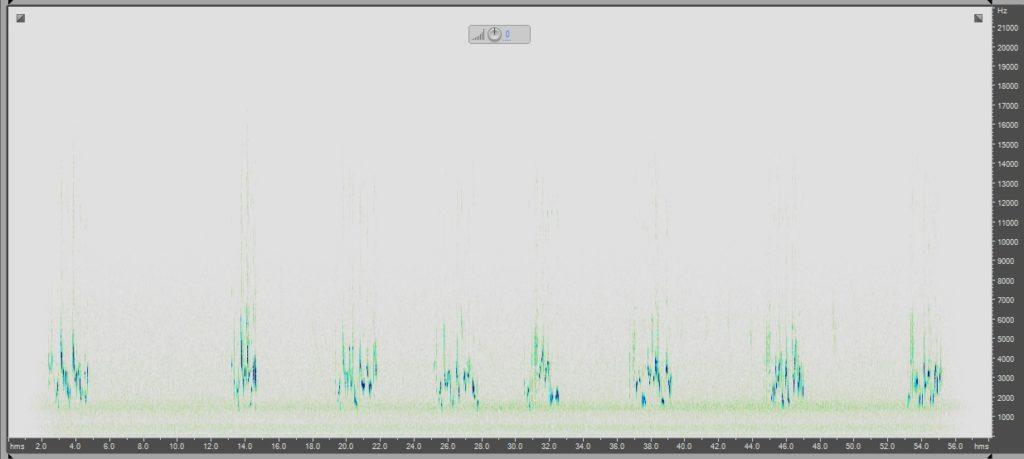
In the last decades we have seen a remarkable increase in subjects performing the so-called Leier song (but what does Leier mean? let’s hear from Giancarlo Fracasso…), a song characterized by one or two notes repeated several times in the final part of the song phrase (see below).
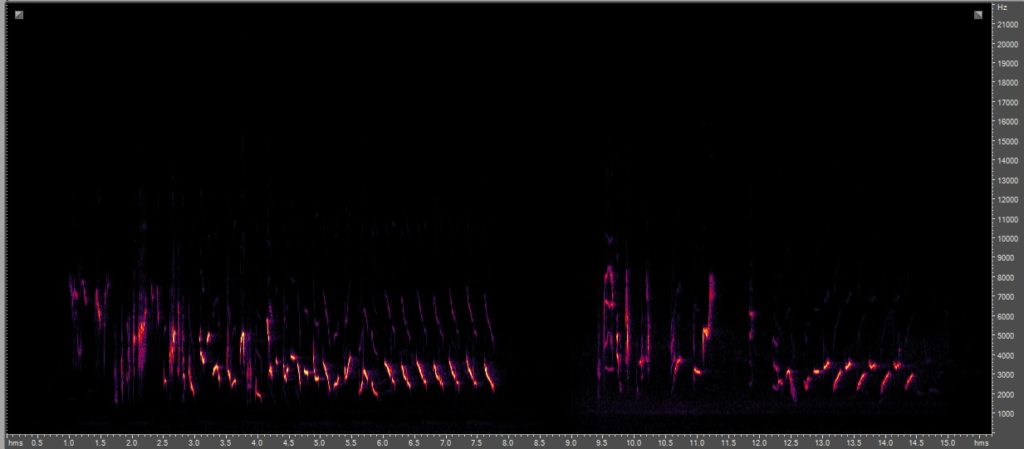
Blackcap Leier Song
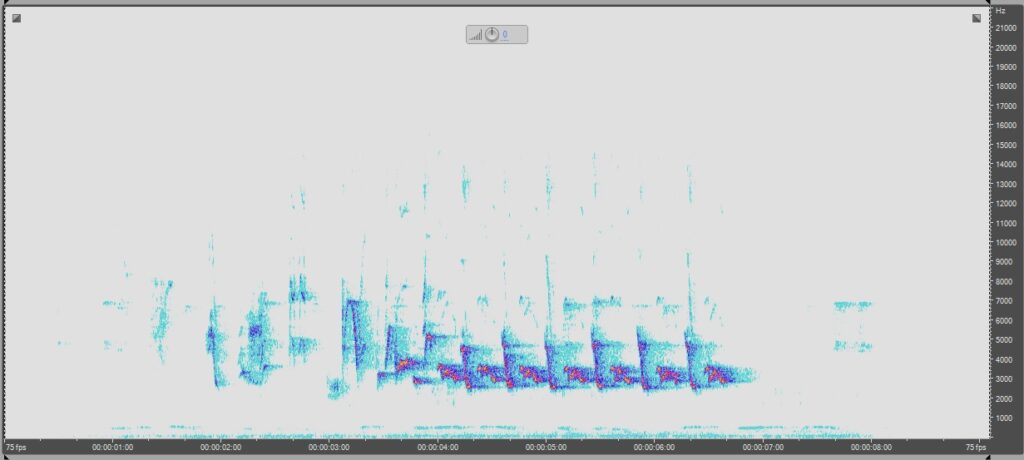
Blackcap Leier Song
Here a prolonged song, also known as plastic song
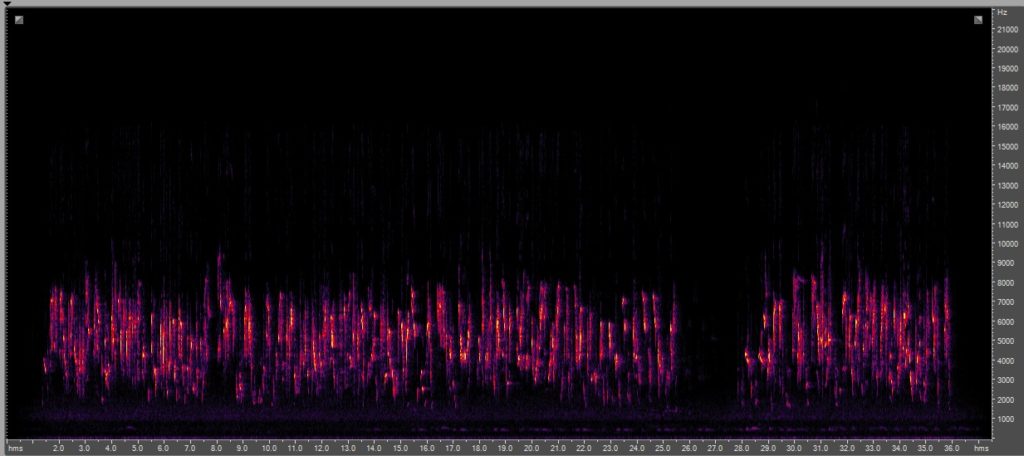
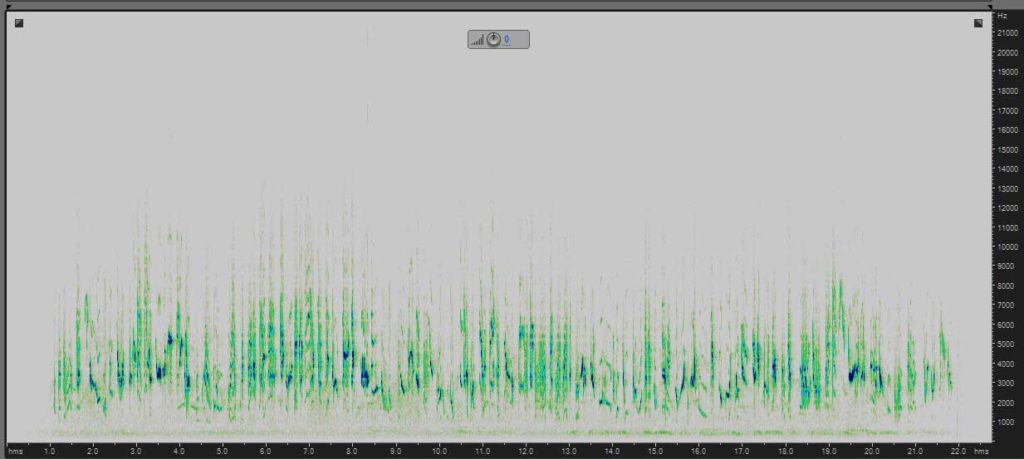
_________________________________________________________________________________________________________
Below we have four examples of the specialty of the blackcap: the imitative song.
It’s easier to hear it during the spring migration.
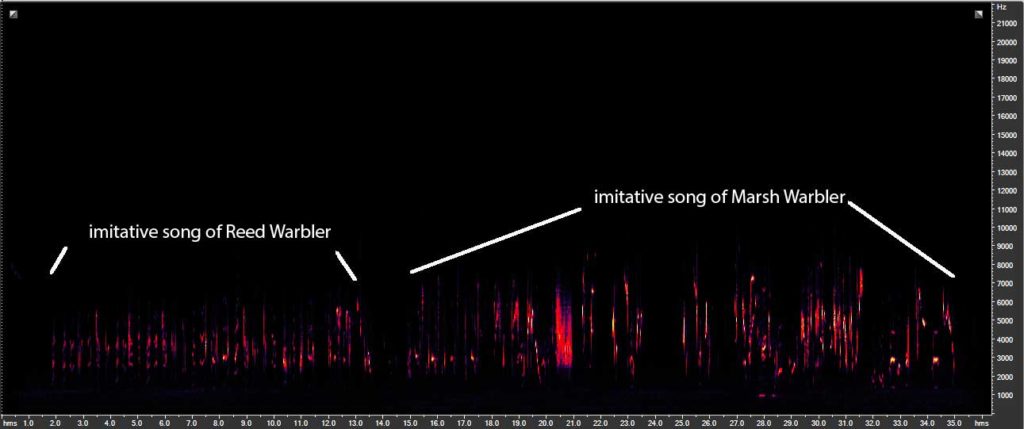
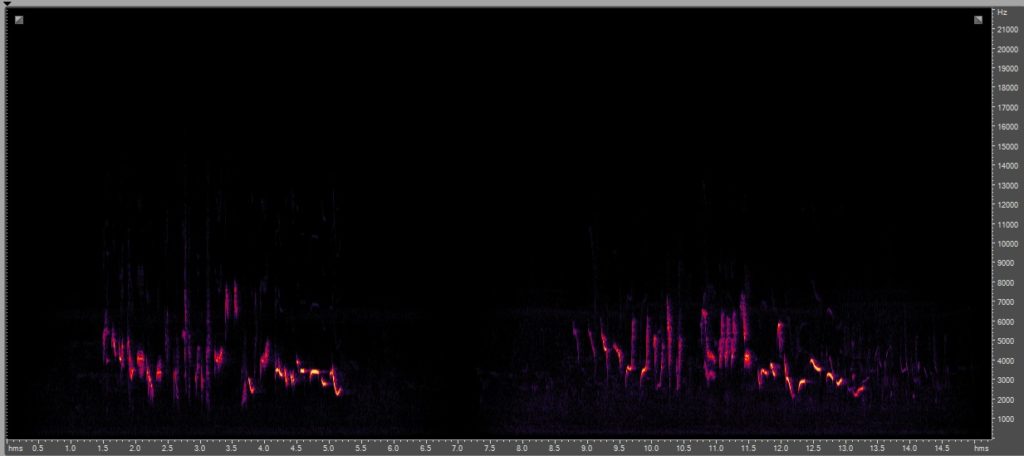
Now a subsong of a juvenile bird, mainly hearing in autumn and winter.
It’s very soft, with very long and interminable phrases.
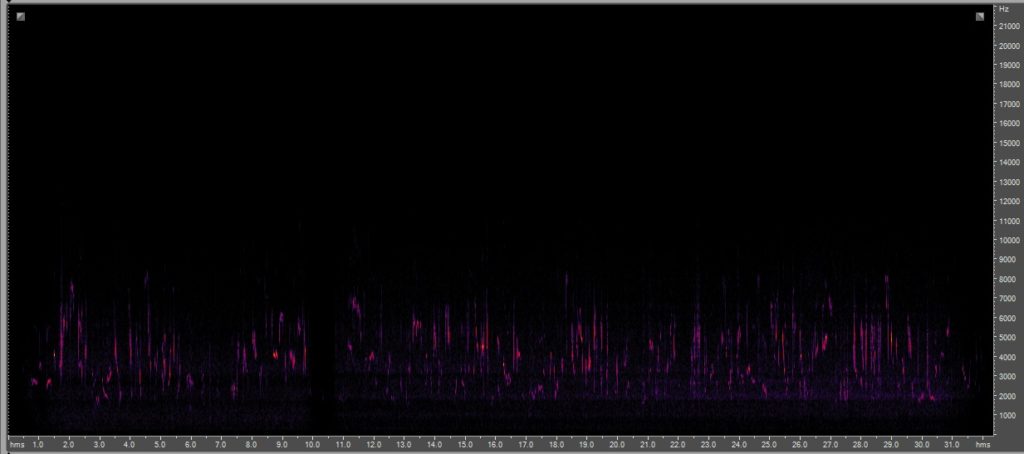
Finally a very curious and repetitive Blackcap song!
Juvenile MARSH WARBLER Subsong
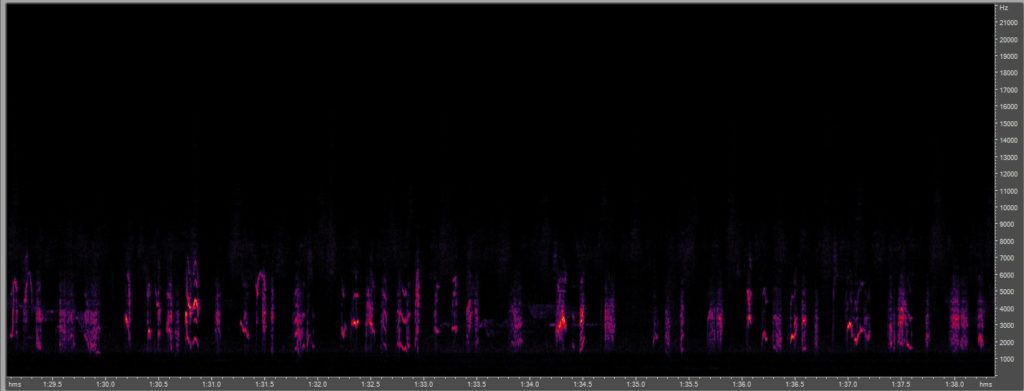
This is a subsong not so easy to record and particularly difficult to recognize: it is the song of a juvenile male of a Marsh Warbler, Acrocephalus palustris, about two months old, which already begins to emit its first singing phrases. In the last part of the file there is the generic call.
Questo è un sottocanto non facile da registrare e particolarmente difficile da riconoscere: è il canto di un giovane maschio di Cannaiola verdognola, Acrocephalus palustris, nato da meno di due mesi e già alle prese con le sue prime manifestazioni canore. Nell’ultima parte del file ci sono delle note di richiamo.
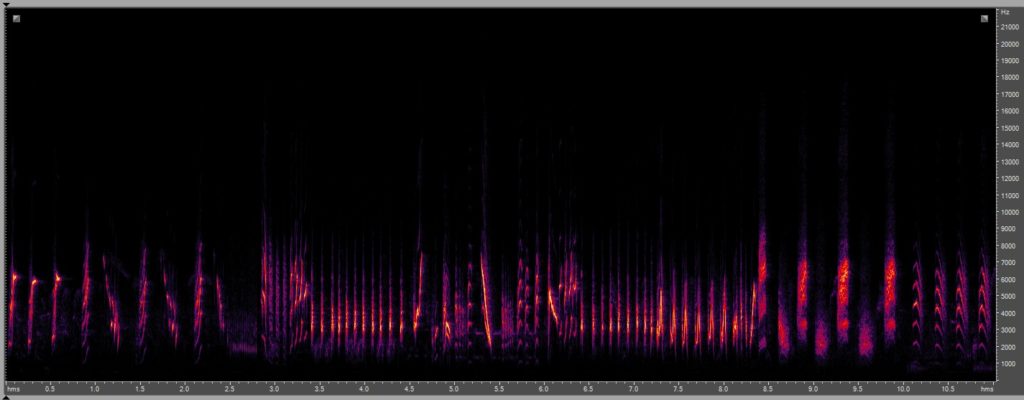
Adult birds of Marsh Warbler produce a complex song composed exclusively of dozens of imitations of songs and calls of other bird species, both of species found in Europe (nesting areas) and those found in South Est Africa (wintering quarters).
Gli adulti di Cannaiola verdognola producono un canto canto molto complesso, composto quasi esclusivamente da decine di imitazioni di canti e richiami di altre specie di uccelli, sia di specie presenti nell’areale di nidificazione europeo, sia nella zona si svernamento che si trova in Africa meridionale orientale.
PS – Audio files recorded using a DIY parabolic stereo microphone system.
Nightingale – Nocturnal Song
Nightingale – Nocturnal Song
(Listening with headphones is a must!)
Ringed Bush-cricket Grasshopper – Rhacocleis annulata – FIRST RECORD FOR NORTHERN ITALY
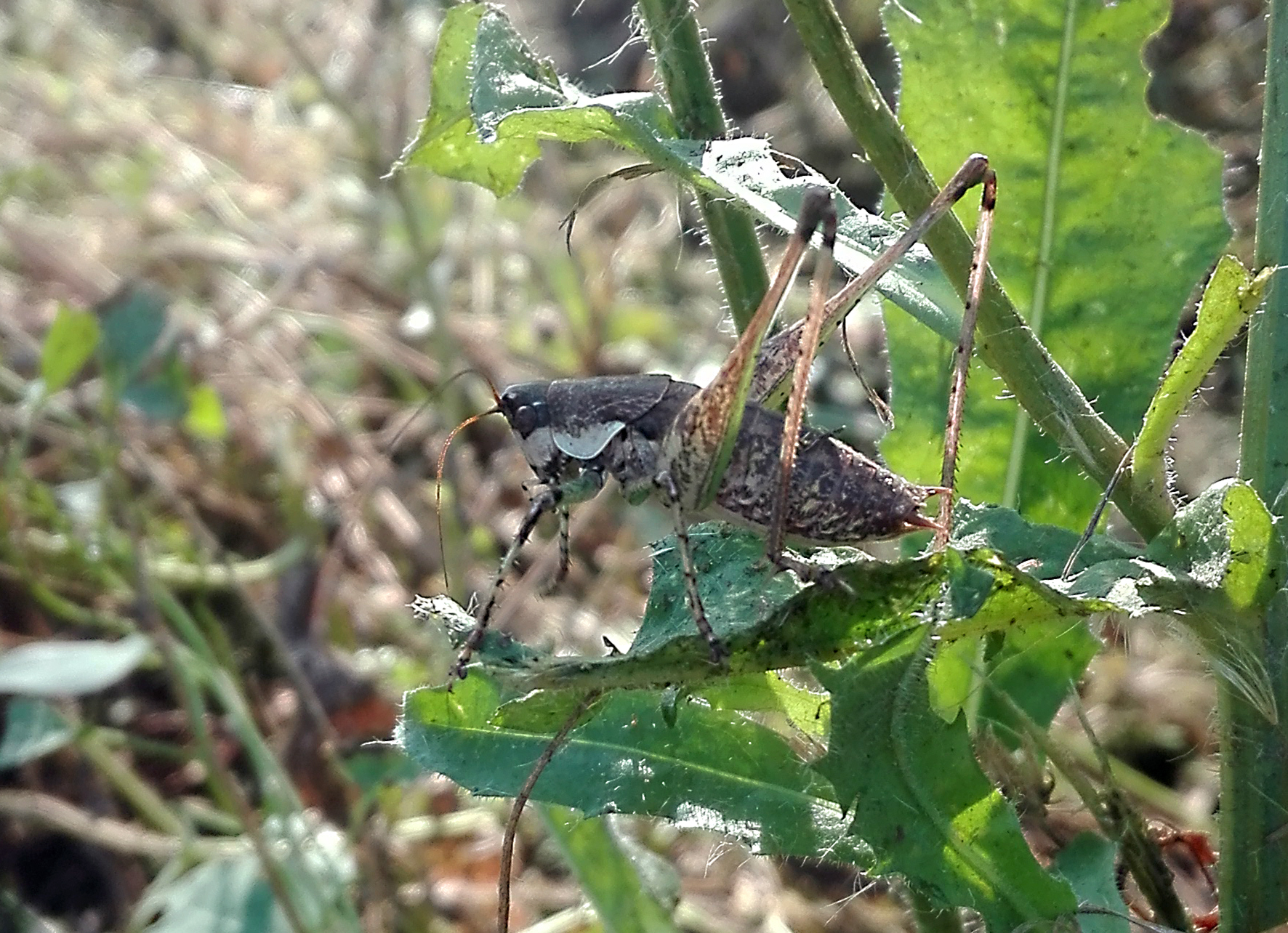
Here the recording of the grasshopper Ringed Bush-cricket, Rhacocleis annulata, first record for Northern Italy, which produces a call that is difficult to hear without the aid of a bat detector.
The first ten phrases using a bat detector; the second ten phrases using a Zoom H1 and an AOM5024 PUI microphone.
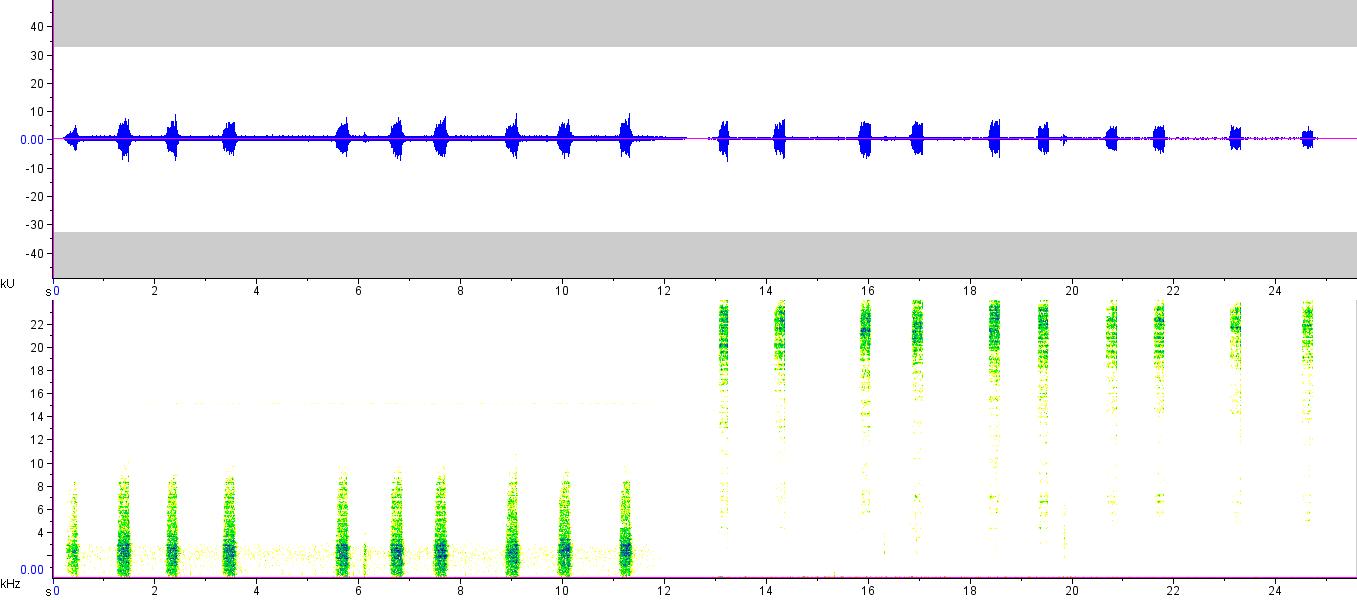
Below a recording using an ultrasonic USB microphone Ultramic 384k by Dodotronic.
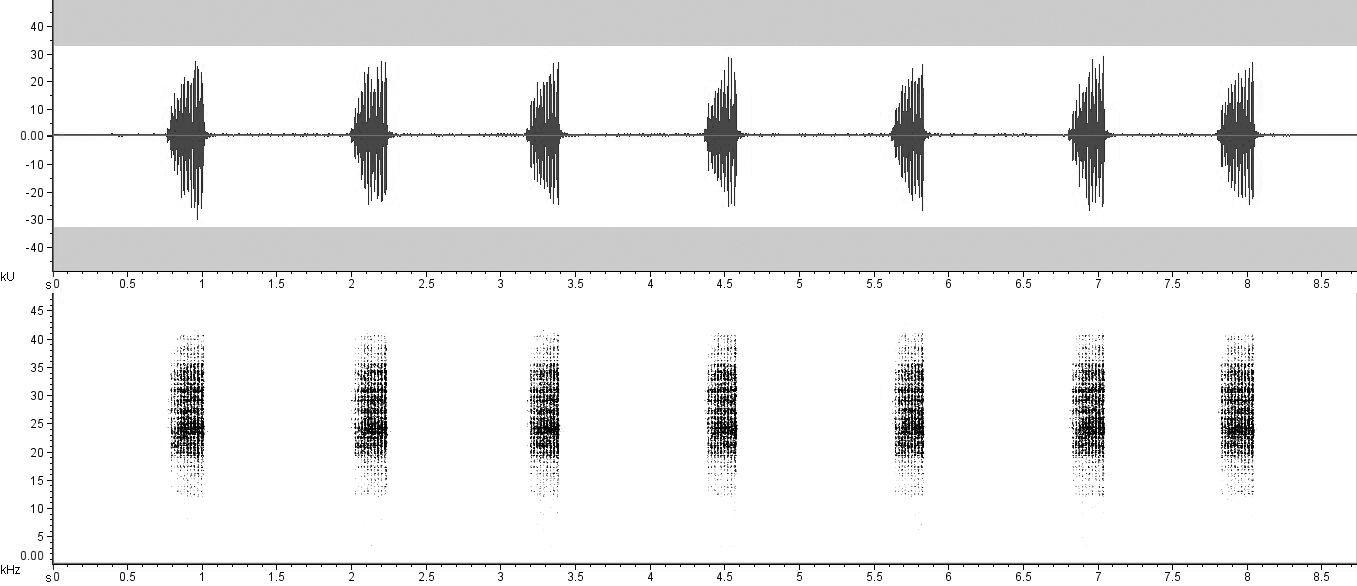
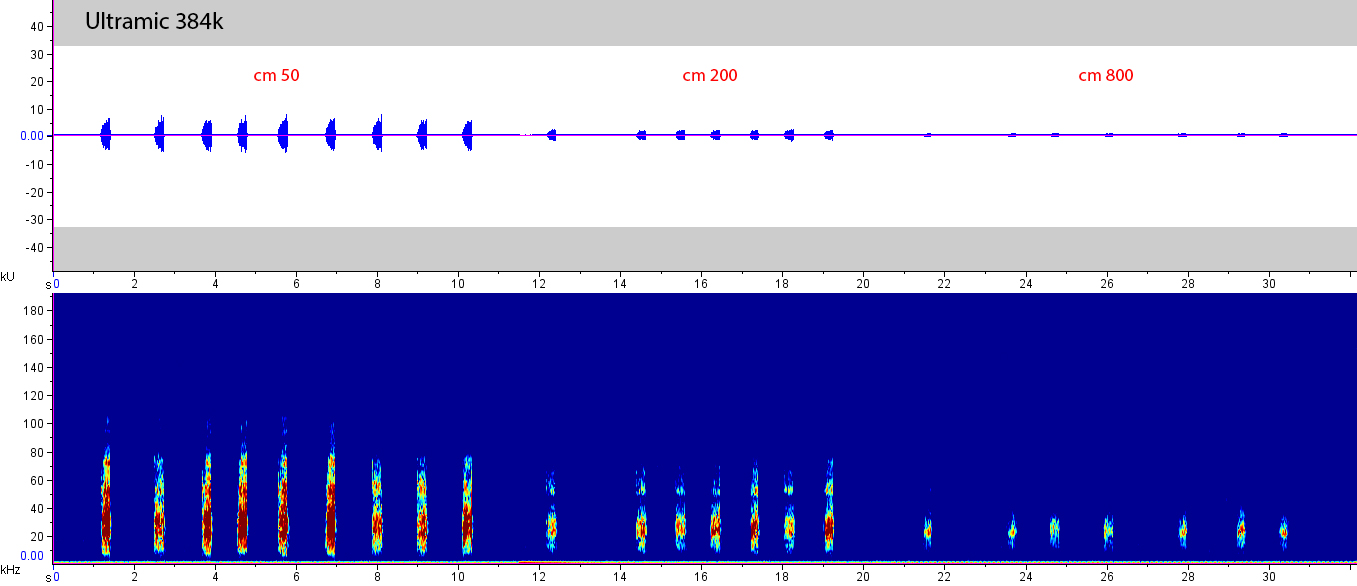
For comparison, I also made a recording using a Zoom H1 recorder and an external DIY stereo microphone system with 2x Primo EM172 capsules.
Despite having a decidedly higher self-noise than the EM172 capsule, the 384k has proved to be more suitable for recording high frequencies, as it was likely to be expected.
note: I didn’t cut the passage of the car to highlight the difference at low frequencies.
In the background Oecanthus pellucens and Eupholidoptera schimdti
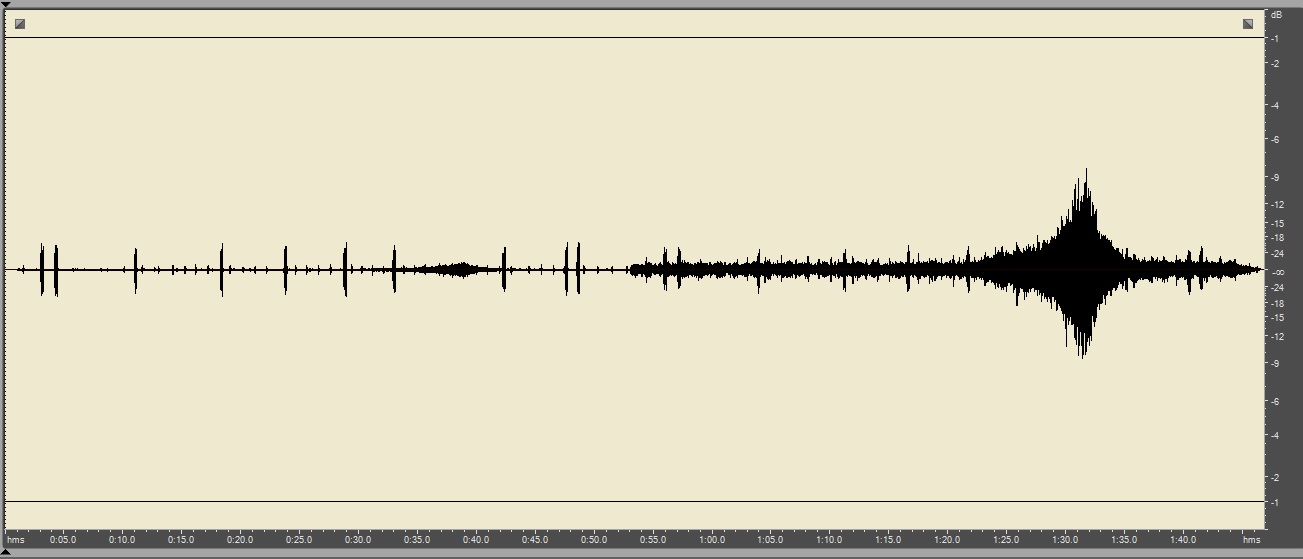
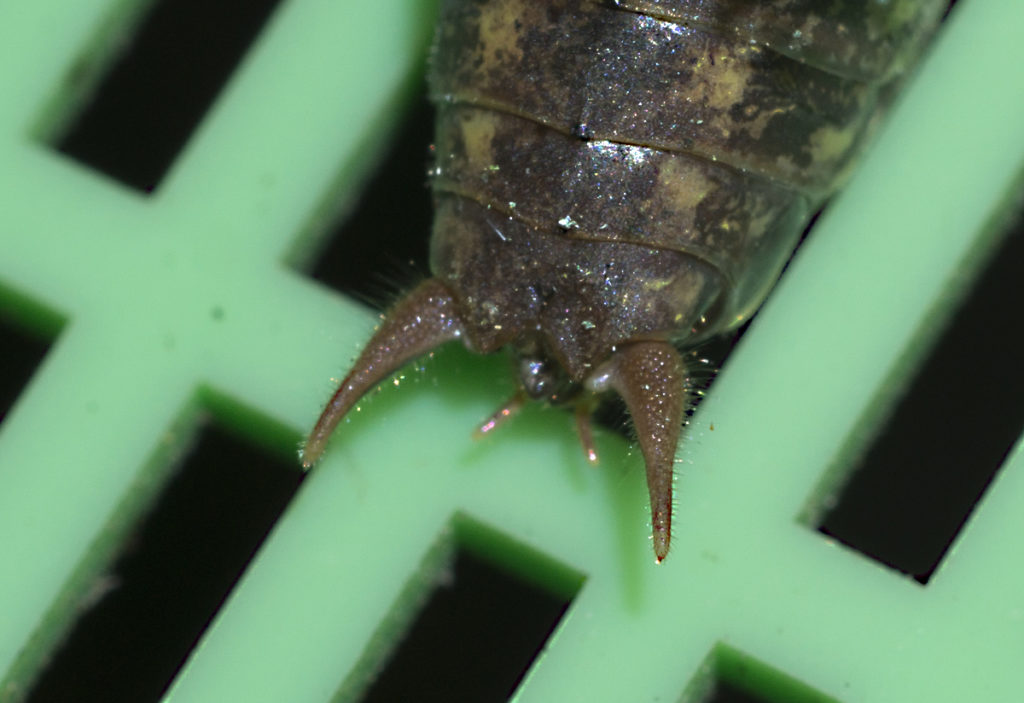
details of the “cerci” of Rhacocleis annulata
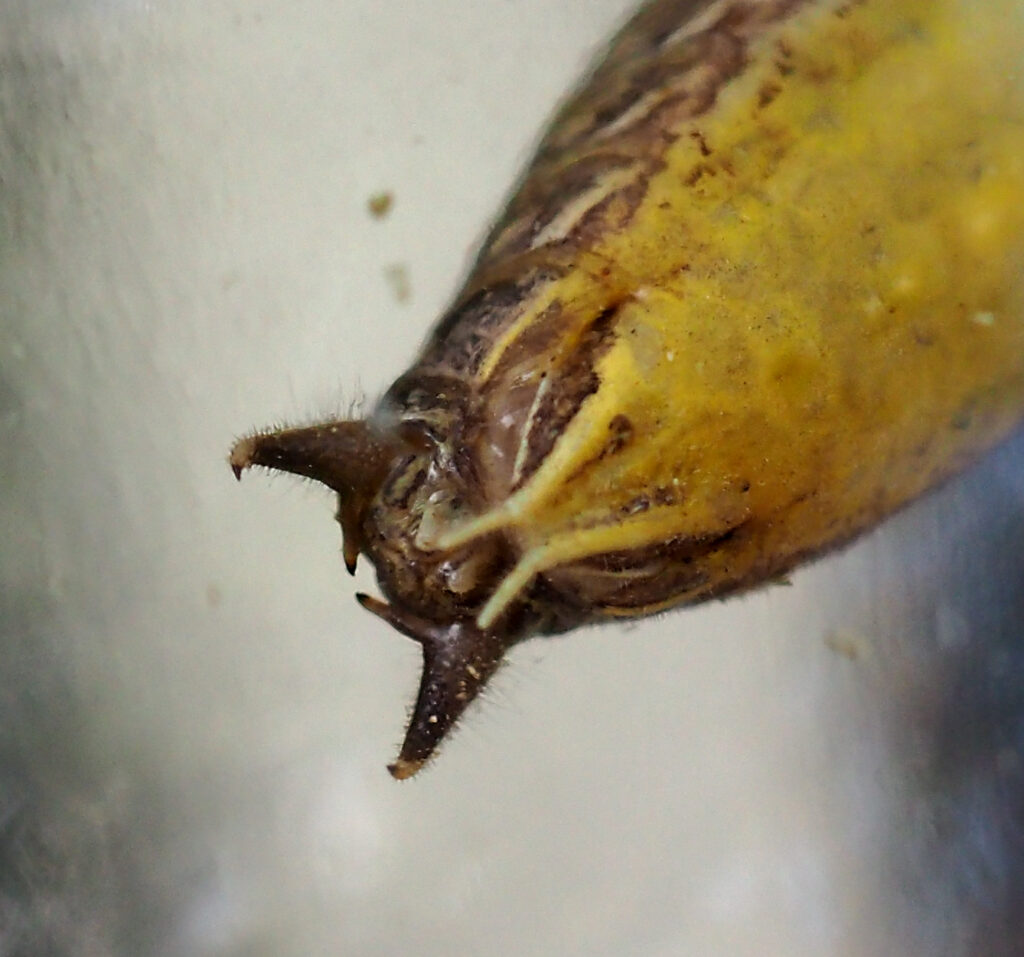
details of the “cerci” of Rhacocleis germanica
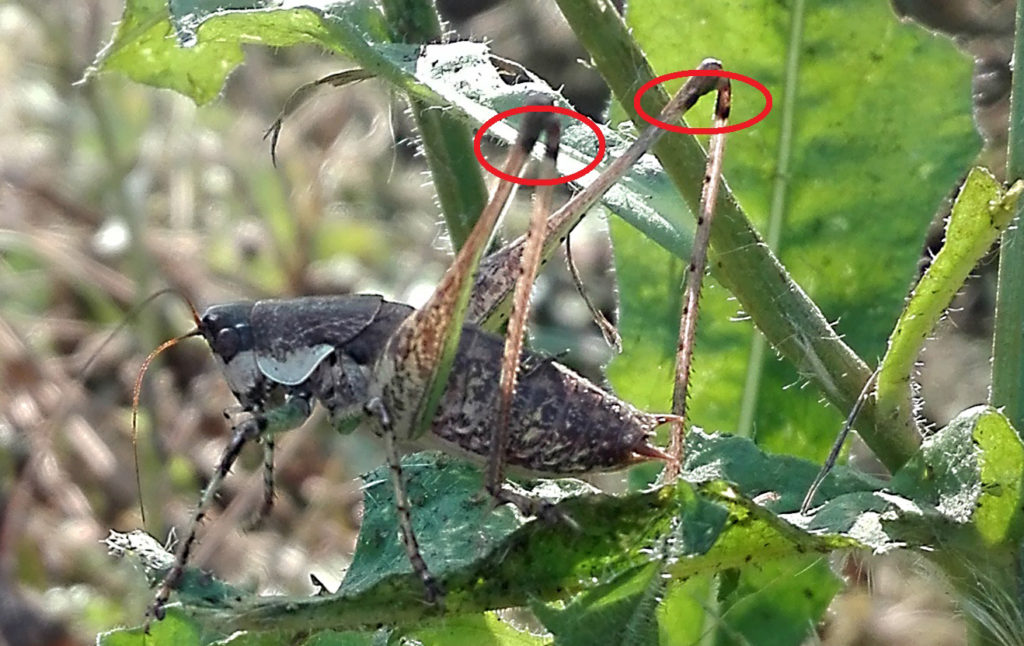
Highlighted tipical rings of R. annulata
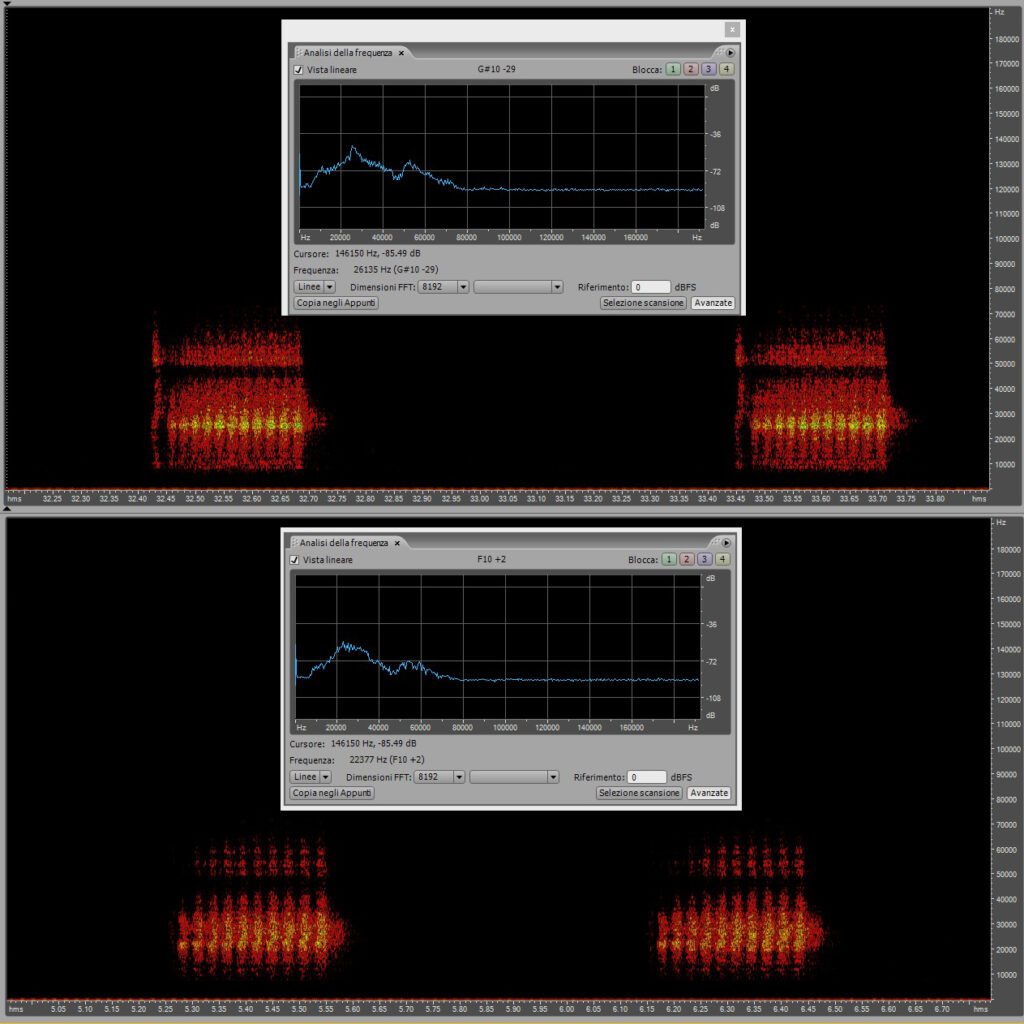
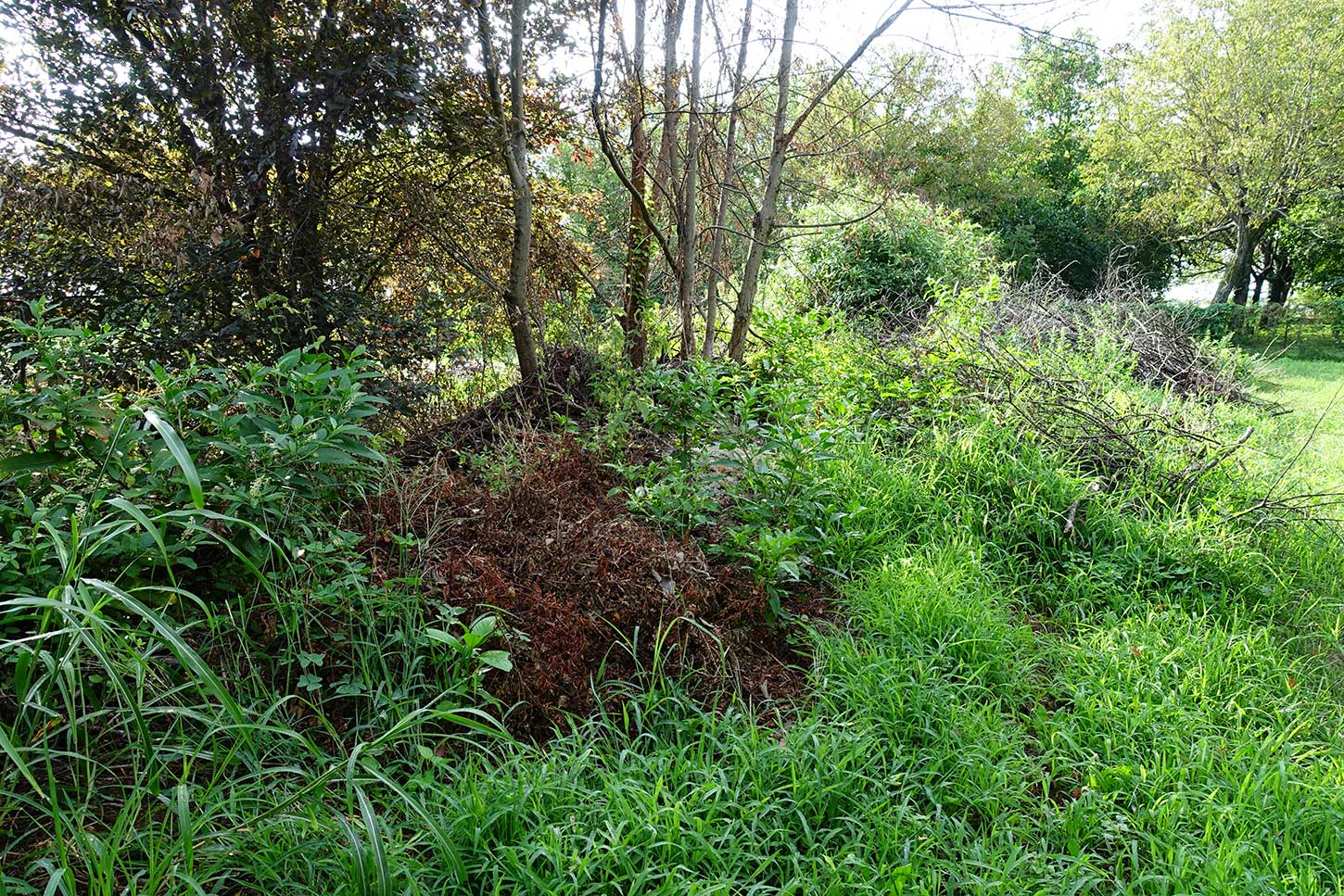
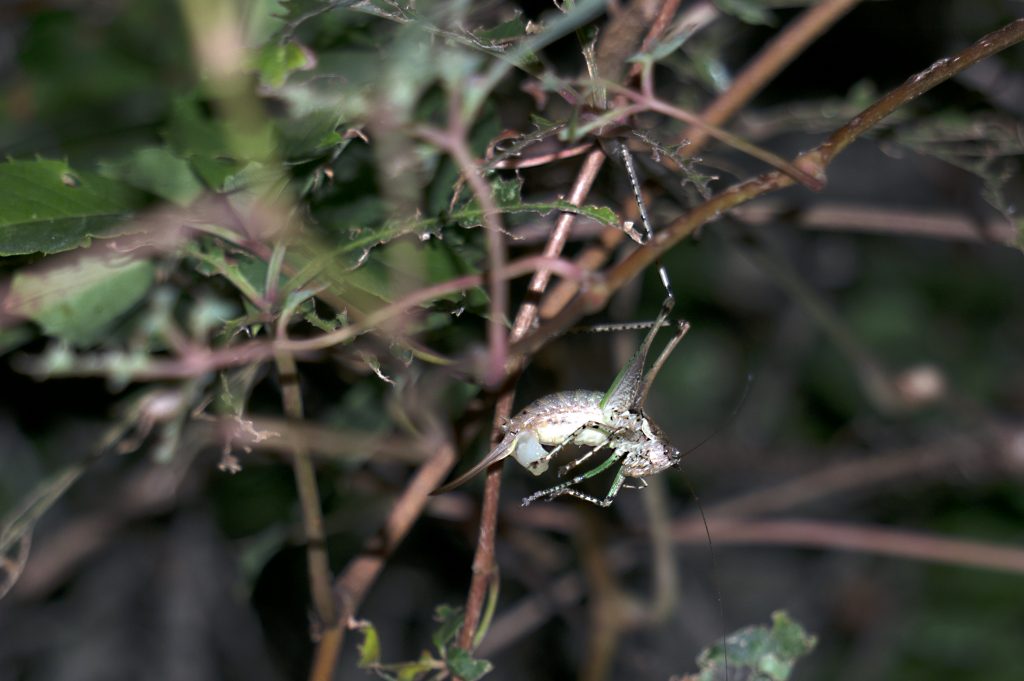
extremity of the abdomen with the spermathophylax that is the gelatinous mass
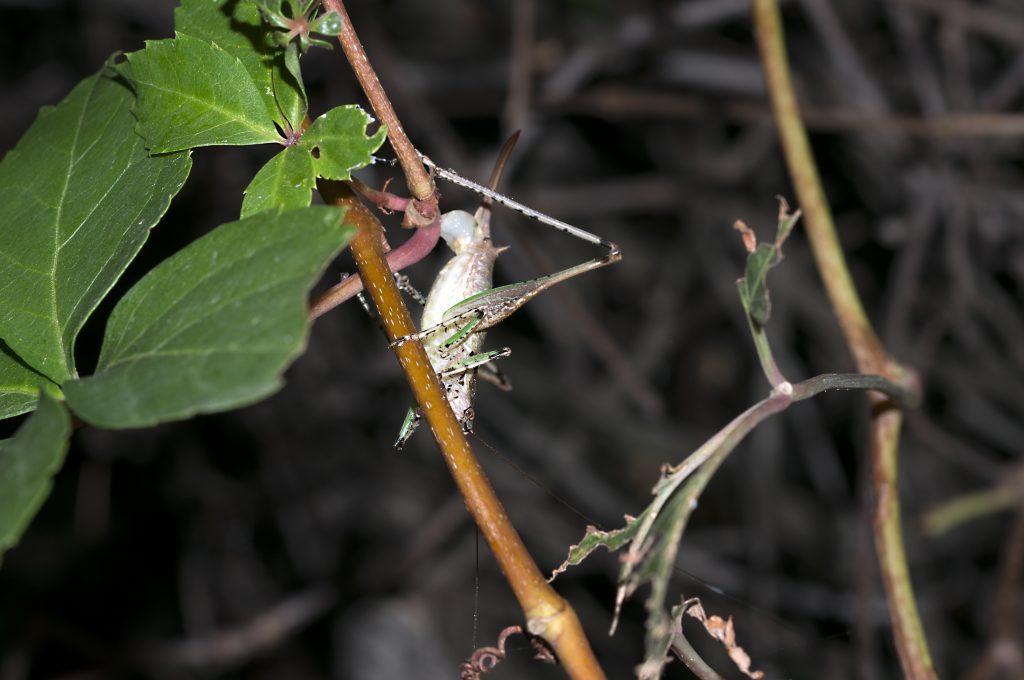
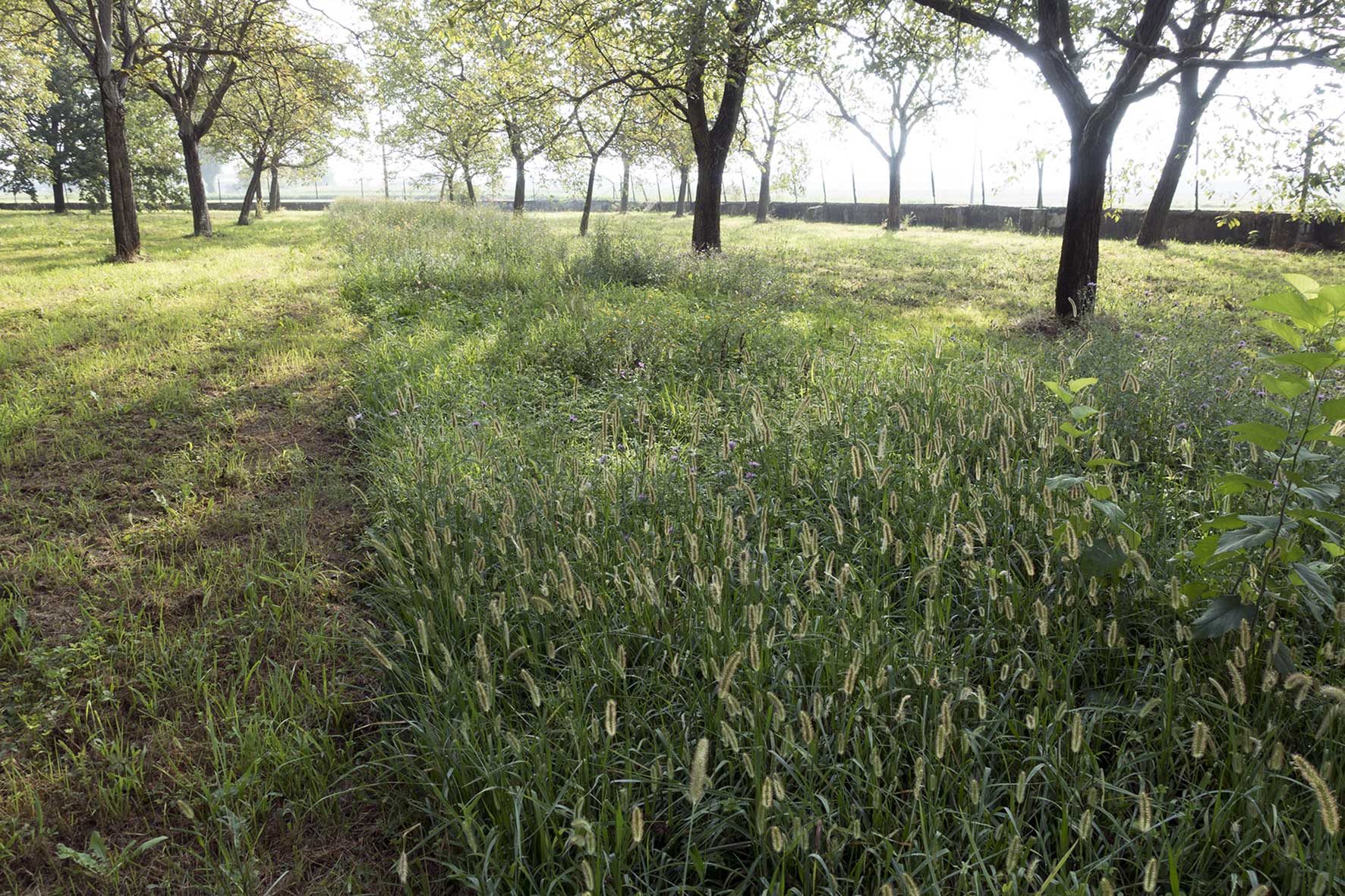
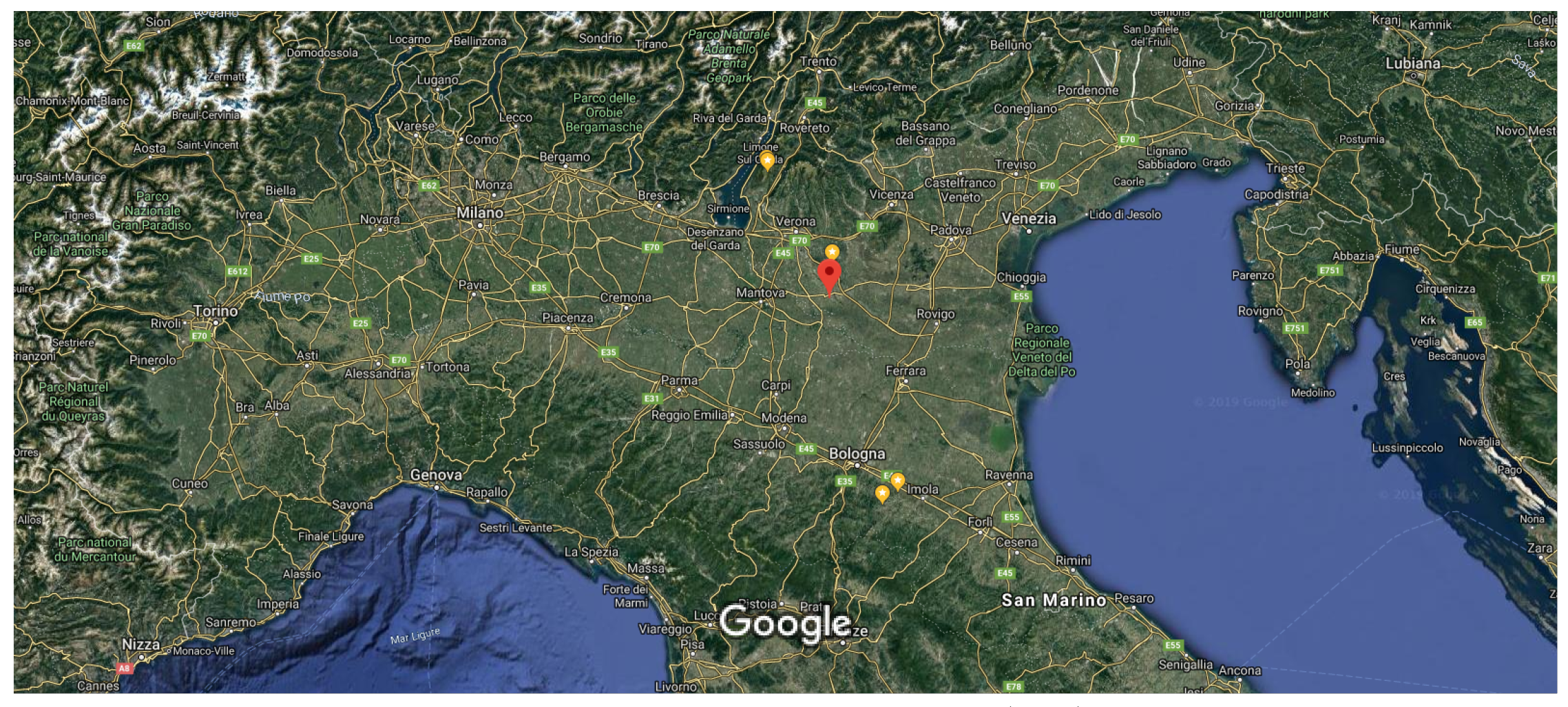
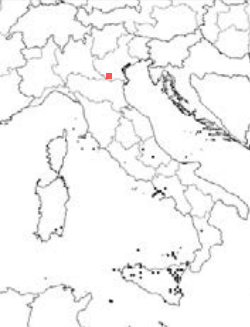
FAUNA D’ITALIA VOL. XLVIII – ORTHOPTERA
I wish to thank my friends Cesare Brizio e Filippo Maria Buzzetti for helping me in recognizing the species.
Nightingales Duet song in a marshy environment
4. TETA – DIY Stereo Microphone – AOM 5024L capsules
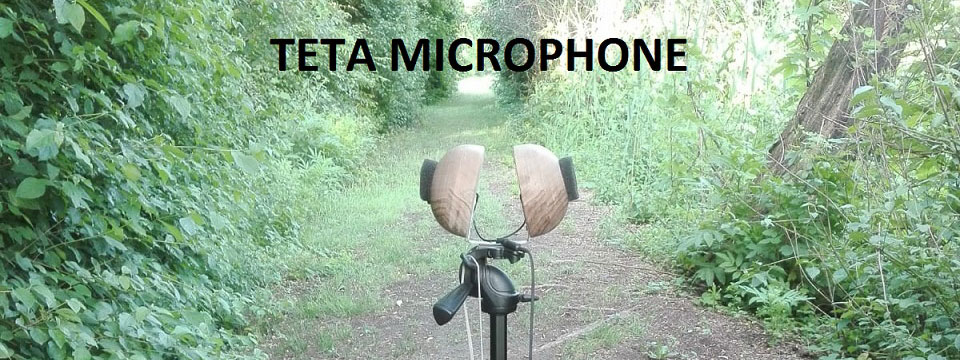
Here a tested AOM 5024L microphone capsule. This capsule is comparable in size and sound performance to the most known and widespread Primo EM 172 (now EM 272).
The AOL is more sensitive than the Primo capsule, however, in some uses, the lower sensitivity and the higher overload limit of the Primo, 119 dBspl vs 110 dB, allows a larger headroom, e.g. when used in a parabola.
Summer night with Orthoptera
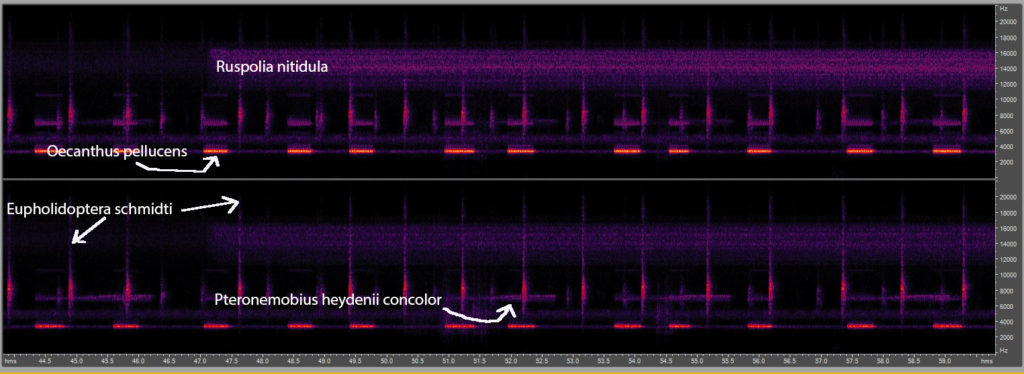
Yesterday’s night summer, before the thunderstorms expected for the next day (now regularly arrived!). The microphone used is a Do It Yourself “TETA Microphone”.
Listening must be performed strictly on headphones, otherwise the whole description that follows loses its value.
Excluding a couple of green frog sounds audible at 10 “, the recording concerns exclusively calls of Orthopterans (crickets and grasshoppers). Two species well audible on all: European Tree Cricket Oecanthus pellucens, located on the left; a grasshopper Eupholidoptera schmidti (or is it a chabrieri?), the “rough” call heard on the right, with a second subject a little farther and more central.
Then we have Pteronemobius heydenii concolor, around 7000 Hertz, the call in crescendo on the right, and Ruspolia nitidula, whose sound emission is reminiscent of the hum of an electrical transformer and starts at 47”.
Enjoy!
Serata estiva di ieri, prima dei temporali previsti per il giorno successivo (oggi puntualmente arrivati!). Microfono utilizzato un “TETA Microphone” autocostruito (il nome si deduce facilmente osservando la costruzione in foto).
L’ascolto va effettuato rigorosamente in cuffia, altrimenti tutta la descrizione che segue perde valore.
Escludendo un paio di versi di rana verde udibili a 10”, per il resto la registrazione riguarda esclusivamente versi di ortotteri (grilli e cavallette per intenderci). Due specie ben udibili su tutte: il Grillo d’Italia Oecanthus pellucens, localizzato sulla sinistra; la cavalletta Eupholidoptera schmidti (o si tratta della chabrieri?), il verso secco che si sente più a destra, presente con un secondo soggetto un po’ più lontano e più centrale.
Abbiamo poi il Grillo dei fossati, Pteronemobius concolor, attorno ai 7000 Hertz, il verso in crescendo anch’esso più sulla destra. All’inizio del file, si percepisce appena un Grillo di Bordeaux Eumodicogryllus burdigalensis. Ad un orecchio sensibile alle alte frequenze, non sfuggirà la Ruspolia nitidula, la cui emissione sonora ricorda il ronzio di un apparecchio elettrico, quale potrebbe essere ad esempio un trasformatore particolarmente rumoroso, ed inizia a 47”.
Buon ascolto!
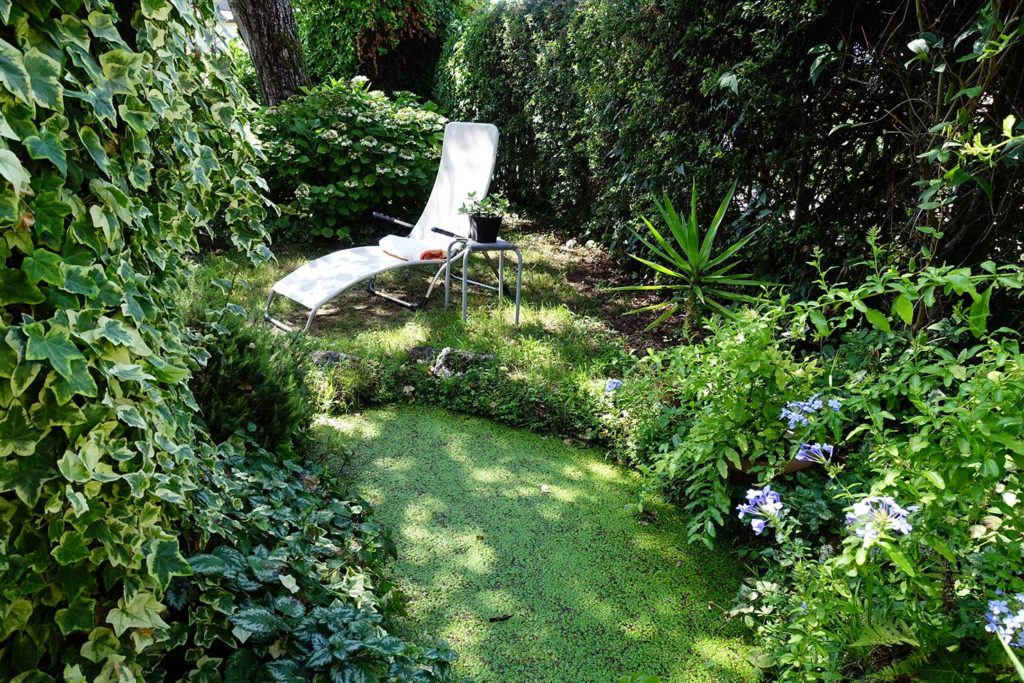
Camouflage Parabolic Disc
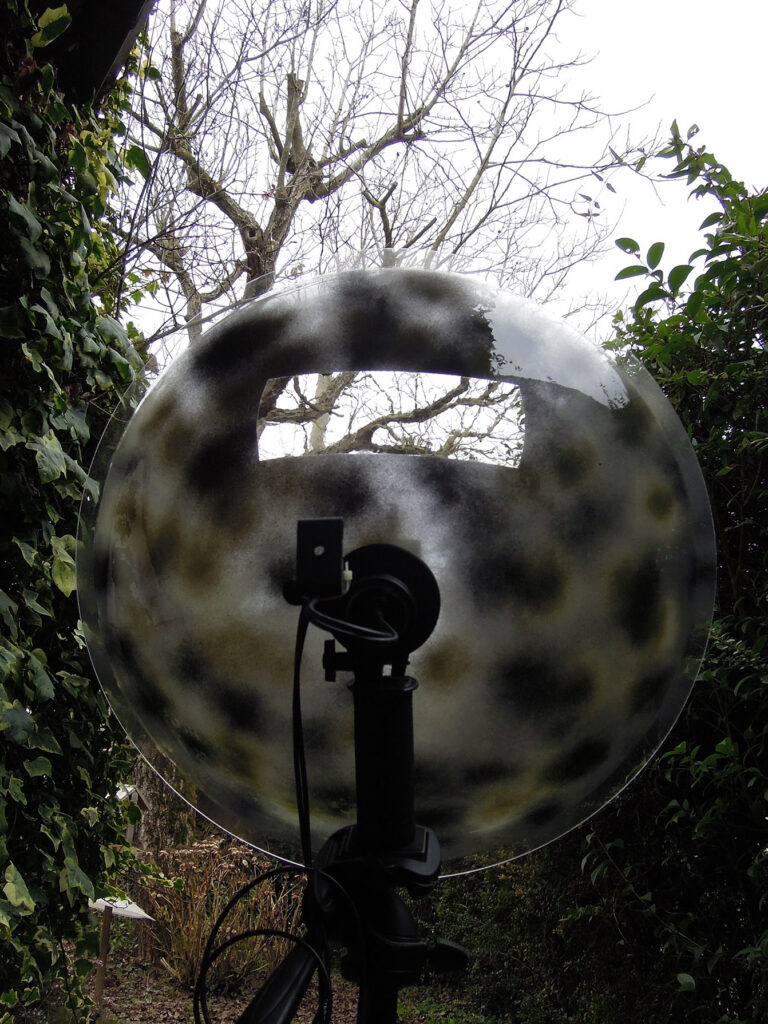
Camo dish with central vision slit
Stereo OR MONO microphone in Parabola?
Which type of microphone inside the parabolic dish: Stereo, Mono, or Twin Mono?
As already stated by Wahlström (Sten Wahlström, Swedish Radio, Karlstad, Sweden, JAES Volume 33 Issue 6 pp. 418-429; June 1985), acquire a stereo effect using a parabolic microphone system is possible, but only for everything on the sides of the focal point of the parabola. The main subject in the center will be recorded completely in monophony. It may be the listening will have a sort of “ping-pong” effect, something common to all stereo recordings made using a short distance from the two right and left microphones, and the stereo baffle in the parabolic microphone does not escape this rule. Definitely, the stereophonic effect will be given only by the background of voices that surround the main monophonic subject.
To acquire a good stereophonic effect using a parabolic reflector, an effect that is as truthful as possible, the main subject may be recorded slightly off-axis with respect to the focal point of the parabola. In this way, even the target subject of our recording will contribute to the stereophony of the sound stage, thus giving our Soundscape an additional feeling of truthfulness.
An advantage of the stereo reception using a parabolic dish is the virtual (and even real!) immersion in the sound stage, so it will be very easy to track a subject moving in any direction. In fact, if our singer moves to the right, we will hear the signal move in that direction, and therefore it will become easy to direct the dish to that side, which is practically impossible if we use a Mono microphone instead of a Stereo.
NOTE – The correct use of a parabolic microphone without the use of stereo headphones is impossible. I would like to give a recommendation: never use the intraural earphones, they do not isolate properly from the external environment, creating a mix for listening between the signal in the headphones and what is heard externally, with a general sense of perceived confusion. Furthermore, it is very difficult for these small earphones to reproduce the low frequencies, so most of the times we will not be able to assess whether our recording will be without unexpected background noises due for example to an involuntary movement of our hand, something will ruin inexorably our recording. Believe me, it is not easy to stand still with your hand extended to support the weight of the dish for several minutes, no matter how slight it is!
And here we could open a new chapter, on the use of a stand for a perfect parabolic microphone recording. With a stable subject singing from a perch, using a tripod for photographic use is the best thing. However, if we find ourselves having to track an individual who emits his own note of call and/or singing while moving continuously within the canopy of a tree, a bush, or in the sky, using a tripod can be difficult; after a while you feel the need to have to remove the parabolic microphone from the stand, to follow the subject by directing the dish only with a slight twist of the wrist. A compromise solution could be the use of a light monopod.
Ultimately, is it better to record in stereo or mono?
Why use a Mono type microphone, if Stereo gives these advantages?
If we want to get the spectrogram from a recording, in order to be able to study the song or a call of a species, having a signal as “clean” as possible is actually the best thing. The use of a Monophonic microphone, inside a parabolic dish, contributes in a decisive way to obtaining a perfect spectrogram. Even better if we use a so-called Twin Mono microphone, that is a microphone equipped with a double microphone capsule, one of different type for each of the two channels. We can use an omnidirectional capsule on one channel and a unidirectional one (cardioid) on the other. This will give the possibility of obtaining a more isolated signal from the background noise with the use of a cardioid capsule, or a richer signal at low frequencies using an Omnidirectional capsule. The choice for one or the other channel will depend on a set of aspects that will have to be evaluated at the time of the playback analysis. Not infrequently this possibility of recording on two separate channels, with capsules with different polar diagrams, will allow us to save a track that could otherwise be ruined by a signal saturation. See this example!
The Telinga Twin Science is a great example of a Twin Mono parabolic microphone. Another valid realization is that of Dodotronic with HiSound Mono.
Quale tipologia di microfono all’interno del disco parabolico: Stereo, Mono, o Twin Mono?
Come già descritto da Wahlström (Sten Wahlström, Swedish Radio, Karlstad, Sweden, JAES Volume 33 Issue 6 pp. 418-429; June 1985), ottenere l’effetto stereo in parabola è possibile, ma solamente per tutto ciò che sta ai lati del punto focale della parabola. Il soggetto principale ripreso al centro, risulterà registrato completamente in monotonia. All’ascolto si potrà avere una sorta di effetto “ping-pong”, cosa comune a tutte le registrazioni stereo effettuate con le capsule microfoniche posizionate a breve distanza l’una dall’altra, e il microfono stereo a paletta inserito nel disco parabolico non sfugge a questa regola. In definitiva, l’effetto stereofonico sarà quindi dato unicamente dal sottofondo di voci che contornano il soggetto monofonico principale.
Per ottenere un buon effetto stereofonico, utilizzando un riflettore parabolico, un effetto che sia il più veritiero possibile, si può registrare il soggetto principale leggermente fuori asse rispetto al punto focale della parabola. In questo modo, anche il soggetto target della nostra registrazione andrà a concorrere alla stereofonia della scena sonora, dando così al nostro Soundscape un ulteriore grado di veridicità.
Un vantaggio della ricezione stereo in parabola è che, trovandosi virtualmente (e di fatto!) immersi nella scena sonora, risulterà molto agevole seguire un soggetto mentre si sposta in qualsiasi direzione. Se infatti il nostro cantore si sposterà verso destra, sentiremo il segnale spostarsi in quella direzione, e quindi diverrà naturale direzionare la parabola proprio da quella parte, cosa praticamente impossibile se si utilizza un microfono di tipo Monofonico anziché Stereo.
NOTA – A prescindere dal fatto che il corretto utilizzo di un microfono parabolico senza l’uso di cuffie stereofoniche è impossibile, mi sento di dare una raccomandazione: mai utilizzare gli auricolari di tipo intraurale, non isolano a dovere dall’ambiente esterno, creando all’ascolto un mix tra il segnale in cuffia e ciò che si sente esternamente, con un generale senso di confusione percepito. Inoltre, ben difficilmente questi piccoli auricolari riprodurranno le basse frequenze, per cui la maggior parte delle volte non saremo in grado di valutare se la nostra registrazione risulterà priva di inaspettati rumori di fondo dovuti ad esempio ad un movimento involontario della nostra mano, la qualcosa rovinerà inesorabilmente la nostra registrazione. Credetemi, non è facile rimanere fermi immobili con la mano tesa a sorreggere per diversi minuti il peso della parabola, per quanto leggera essa sia!
E qui potremmo aprire un nuovo capitolo, sull’utilizzo di uno stativo per una perfetta registrazione in parabola. Con un soggetto stabile in canto da un posatoio, utilizzare uno stativo per uso fotografico è la cosa migliore. Se però ci troviamo a dover seguire un individuo che emette le proprie note di richiamo e/o canto mentre si sposta continuamente all’interno della chioma di un albero, di un cespuglio, o ancora in cielo, utilizzare un treppiede può risultare difficile; dopo un po’ si sente la necessità di dover staccare il microfono parabolico dallo stativo, per seguire il soggetto direzionando la parabola unicamente con una leggera torsione del polso. Una soluzione di compromesso potrebbe essere l’utilizzo di un leggero monopiede.
In definitiva, meglio registrare in Stereo o in Mono?
Perché allora utilizzare un microfono di tipo Mono, se lo Stereo dà questi vantaggi?
Qualora si volesse ottenere il sonogramma da una registrazione, al fine di poter studiare il canto o un richiamo di una data specie, l’avere un segnale il più “pulito” possibile è di fatto la cosa migliore. L’utilizzo di un microfono Monofonico, all’interno del nostro disco parabolico, contribuisce in maniera decisiva all’ottenimento di un perfetto sonogramma. Meglio ancora se utilizziamo un cosiddetto microfono Twin Mono, ossia un microfono dotato di doppia capsula microfonica, una di tipo diverso per ognuno dei due canali. Potremo così utilizzare ad esempio una capsula omnidirezionale su un canale e una unidirezionale (cardioide) sull’altro. Ciò darà la possibilità di ottenere un segnale più isolato dai rumori di sottofondo con l’utilizzo di una capsula cardioide, oppure un segnale più ricco alle basse frequenze utilizzando una capsula Omnidirezionale. La scelta per l’uno o l’altro canale dipenderà da un insieme di aspetti che andranno valutati al momento del cosiddetto “sbobinamento”, ossia in sede di riascolto per l’analisi del segnale registrato. Non di rado questa possibilità di registrazione su due canali separati, con capsule a differente diagramma polare, ci permetterà di poter salvare una traccia che diversamente poteva risultare rovinata da una saturazione del segnale. Vedi questo esempio!
Il Telinga Twin Science è un ottimo esempio di microfono parabolico Twin Mono. Altra valida realizzazione è quella di Dodotronic con l’HiSound Mono.
Hippolais icterina
11 May 2019 – recorded with double PZM microphone with 2+2 EM 172 capsules Primo microphone in parabolic dish 53 cm, Roland R05 recorder; slight wind in the leaves of a oak where the subject was singing up in the canopy. In this season the singing is not yet a complete full song.
Blackcap and Great Tit
Blackcap and Great Tit, Singing at Dawn – Sony PCM D50 ME66 Matched Pair Microphnones
There is a noticeable Hiss with the two Sennheiser ME66’s 1.5 Volt battery powered. Unfortunately, at least with my two ME66’s, the Hiss exists, probably due to a problem with the two K6 power supplies; that has already been reported on the web by some users. Powered the ME66’s via Ph 48V recordings result less noisy.

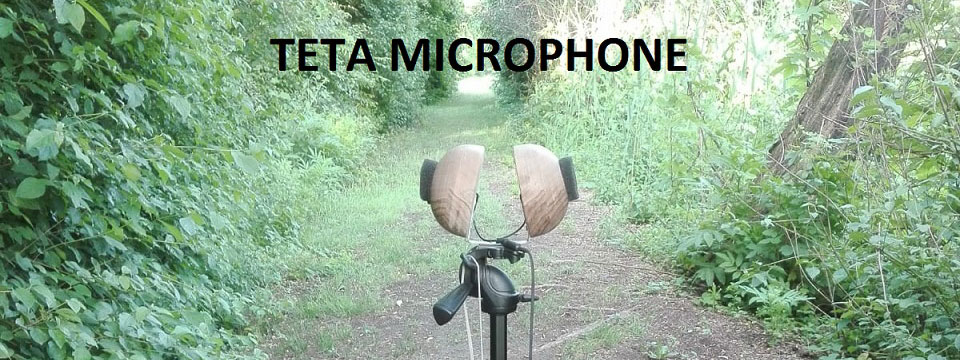
Commenti recenti